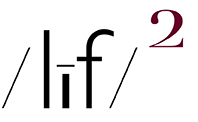my new camera ~ (embiggenable)
AS THE IDEA OF COLOR TRUNDLES AND BLUNDERS DOWN THE winding interweb road of foggy thought, this concept popped up:
“In a lot of cases, color is an essential part of the information being conveyed….There are lots of times you need color just to accurately describe what you're depicting. Of course, looked at the other way around, this might be just an aspect of photography's humdrum role as a tool in commerce and so many other quotidian purposes….it's simply workmanlike.”
Yikes. Bear with me as I write this about that…
In the so called straight photography world of fragmentation and contingency, I would argue that color photography-i.e. pictures which exhibit color as seen in the real world (as much as the medium allows)-is, in fact and in practice, the only legitimate / truthful / reasonably accurate manner in which to represent the real world. That simply is cuz, to the healthy human eye, the real world is seen and perceive in color. Period. End of sentence.
iMo, monochrome, aka BW, photography is a massive fakery-deceit, deception, dissimulation-in that regard. I believe that to be so for many reasons but never more so than when I hear / read the idiotic idea that monochrome photography gets to the “essence” of things cuz it eliminates the “distraction” of color…ya know, like, say, if apples were grey then we would be able to get to their essence more directly. iMo, that is quite simply pure poppycock.
Don’t try to convince me of that idea by citing Weston’s pepper. That’s a very nice picture, some would say, a very sensuous picture and I would agree, however…a significant part of a pepper’s essence is the fact that it is green (or red). That written, I would agree that Weston’s pepper photography is an exquisite example of pictures made in the genre / medium of abstract photography. And, have no doubt about it, I have no reservations, re: monochrome / BW photography as a legitimate art form.
That written, I stand by my belief that color is, well, the color of life. Therefore, since I am living life, I make color photographs.
